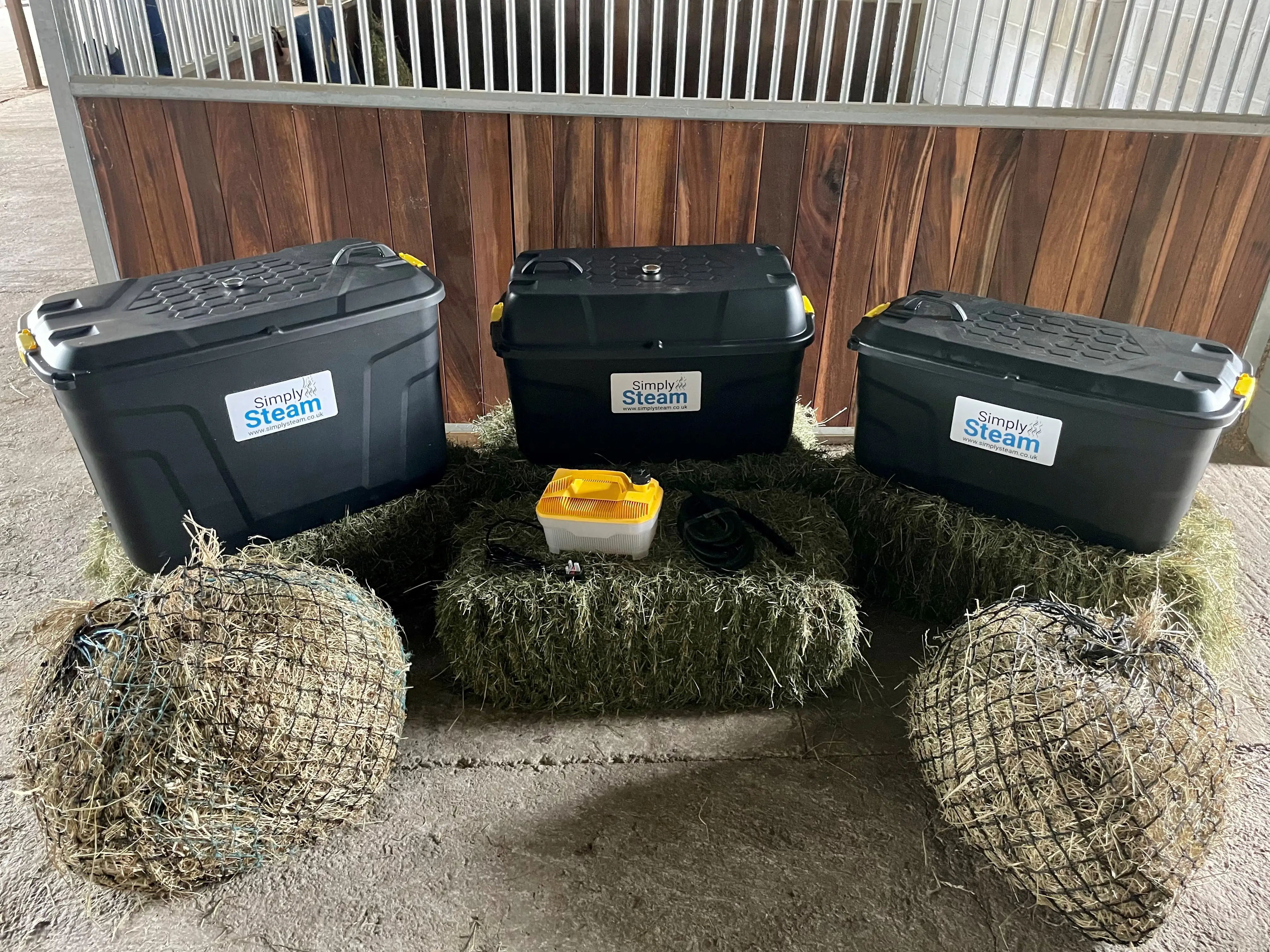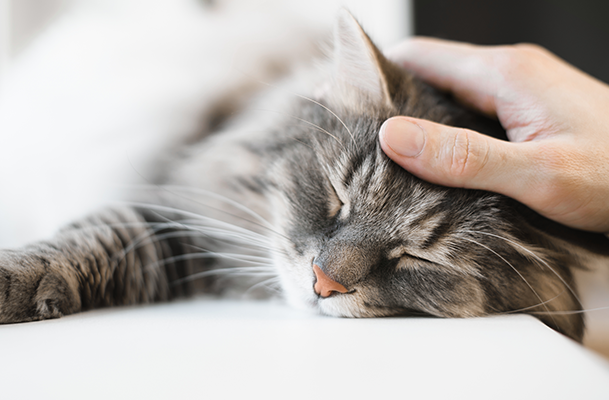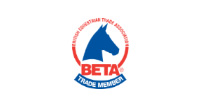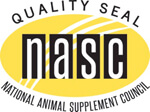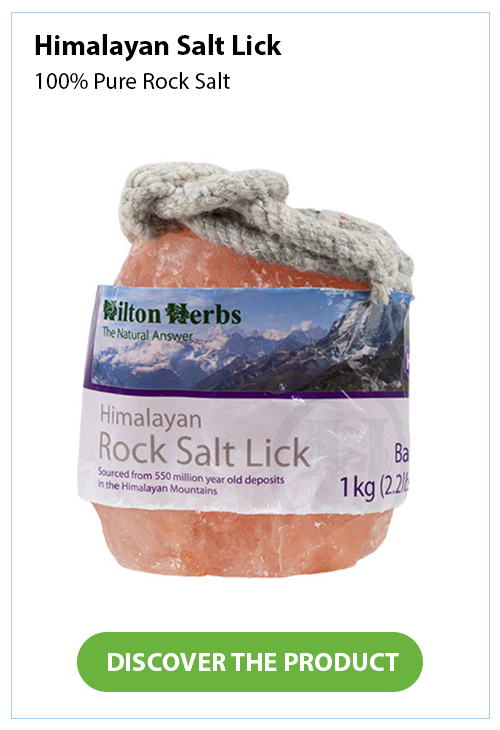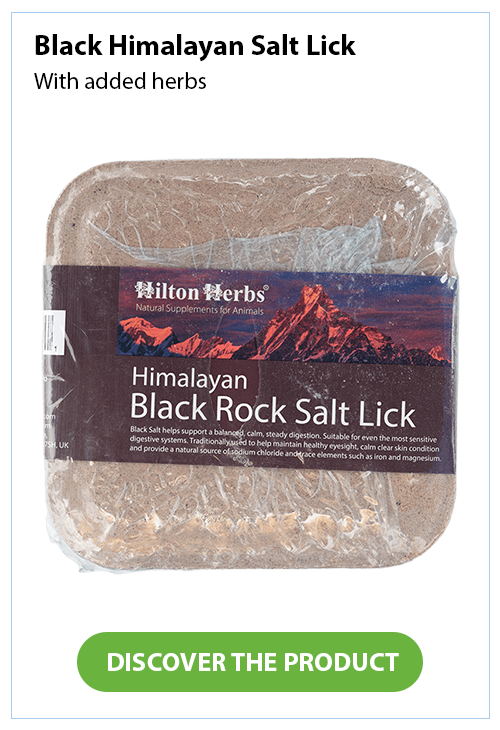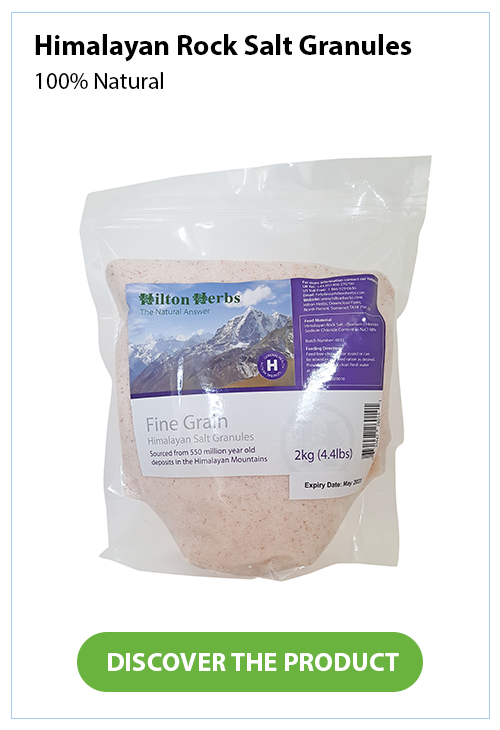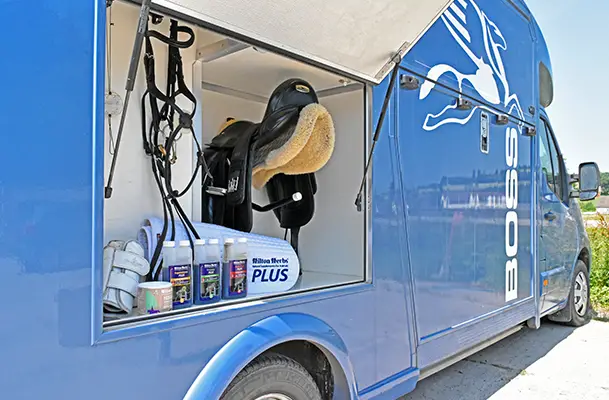Spend 85 € or more for free delivery (Europe mainland)
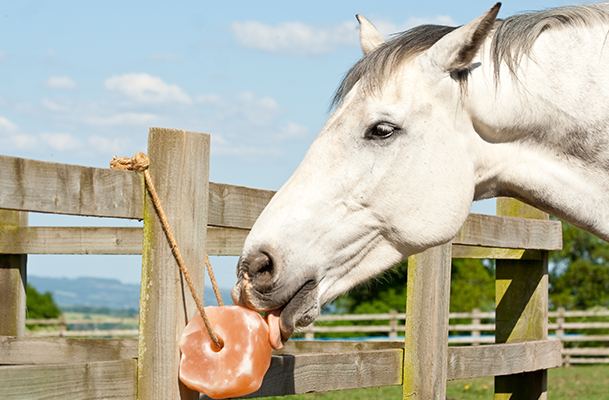
Horses are great at regulating their salt intake based on genuine need. Salt is composed of two minerals - sodium (Na) and chloride (Cl). Table salt (NaCl) contains about 40% sodium and 60% chloride. One teaspoon of salt contains about 2,300 mg of sodium. Salt helps facilitate the movement of nerve impulses through the body’s cells and it also helps to transport specific substances across the cell membrane, including glucose and amino acids. Sodium is the main electrolyte found in the blood and the fluid surrounding cells and if sodium levels are low the blood will not hold enough water. This causes the adrenal gland to release the hormone aldosterone, which tells the kidneys “Do not let any sodium leave the body!” When the kidneys hold on to sodium they excrete potassium in its place, creating an imbalance.
Inadequate sodium intake can promote or aggravate conditions such as anhydrosis (lack of or inadequate sweating), tying up (a muscular disorder resulting in stiff and/or trembling muscles after exertion), and a rapid heart rate. It can also influence the horse to avoid drinking water as the body seeks to keep from flushing away sodium - inadequate water consumption is always a risk factor for impaction colic.
Because of this the average horse requires a steady daily intake of salt each day. During hotter weather and when horses & ponies sweat more, we need to make sure that their Sodium intake is adjusted accordingly. When a horse sweats they obviously lose water from their body, but also a considerable amount of electrolytes.
You can give your horse Himalayan Salt Licks as a source of Sodium intake. Hilton Herbs Himalayan Salt Licks have been analysed and have been shown to be predominantly sodium chloride, with other trace elements such as potassium, magnesium (vital for maintaining health) and iron which is responsible for the distinctive rose pink colour. These can be hung up in the stable / field or put in a feed bucket for your horse to access as and when they want. It is important to provide plenty of clean fresh water at all times if your horse has access to a salt lick. Horses are clever animals so they will tend to only lick them when they need to but if you notice that your horse is licking it excessively, then limiting accessibility is recommended.
You can also give your horse Himalayan Rock Salt Granules which can be added to their feed. This is a good way of controlling and monitoring the exact amount of Salt that your horse will be receiving each day. We suggest a recommended dosage is 28g per day.
Useful reading:
- Supplement guide for the competition horse
https://www.horseandhound.co.uk/features/feeding-horse-salt-653780
 About Edeline Bourrier
Edeline Bourrier
About Edeline Bourrier
Edeline Bourrier
